Planting zucchini seeds in open ground: sowing time and growing rules
Let's go straight to the point. Namely, we will analyze all the main nuances and rules for planting zucchini seeds in the spring in open ground, including talking about the timing of sowing.
If you want to grow zucchini through seedlingsthen you need this material.
On a note! Did you know that the well-known zucchini grown on every continent except Antarctica is actually from Mexico. It is interesting that at first in Europe it was customary to eat only the seeds of this vegetable. It became so popular thanks to the Italians, who proved its indispensability for the most refined dishes. It is not for nothing that today, one of the best glamorous delicacies of French cuisine (Provence) is considered to be stuffed squash flowers.
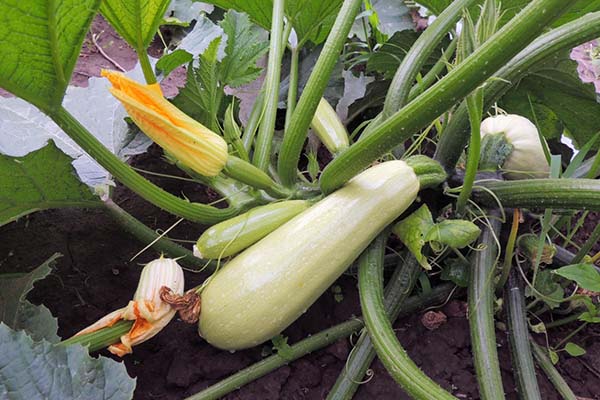
Content
When to plant zucchini seeds in open ground
The optimal time for planting zucchini in open ground varies depending on where you live and its climatic characteristics:
- So, in the Middle lane (Moscow region), zucchini should be sown in open ground in the second half of May.
- In the Urals and Siberia - in early June (as in the Leningrad region).
- In the South of Russia, direct sowing into the ground can be carried out in April and the first half of May.
Interesting! You can also plant zucchini for seedlingsby doing it 20-30 days earlier.
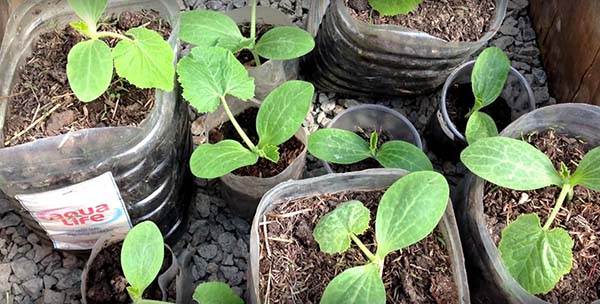
Advice! When choosing the timing of planting zucchini, first of all, you need to pay attention to the weather conditions: as soon as the threat of return spring frosts has passed, then sowing can be carried out. It is also worth considering the use of a covering material or the creation of warm beds.
According to the lunar calendar in 2021
The lunar calendar will always come to your aid if you want to know exactly when to plant.
So, in 2021, favorable days for planting zucchini in open ground are:
- in April - 1, 2, 24, 25, 27-30;
- in May - 2-4, 6, 15-17, 20, 21 25-31;
- in June - 2-4, 11-14.
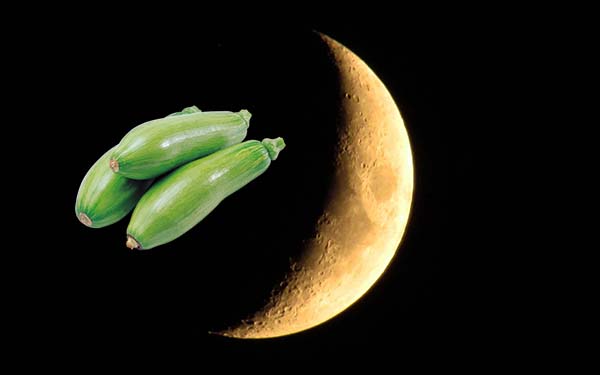
If you fail to plant the zucchini on the above dates, then don't be discouraged! The main thing is that the landing day is not among the unfavorable ones in 2021 according to the lunar calendar (days of the Full Moon and New moons, as well as the period when the Moon is in Aquarius, because it is a barren and dry sign - italicized):
- in April -5-6, 12, 27;
- in May -2-4, 11, 26, 30-31;
- in June -10, 24, 26-27.
Planting zucchini seeds in open ground
By the way! Zucchini can also be grown through seedlings, which is described in detail in this material.
Preparing zucchini seeds for planting
As a rule, when planting seeds directly into the open ground, they are almost not prepared in any way, but to improve their germination and accelerate germination, you can process the seeds of zucchini.
However, if you are not sure that the return frosts will not return, then it is advisable to sow zucchini with dry seeds, because in case of frost, germinated seeds can simply die.
By the way! The site already has a detailed article about how to process cucumber seeds before sowing (everything is the same for zucchini).
For example, they can be warmed up by standing in a sunny window for 7 days or by leaving the bag on a battery overnight.
Note! All pumpkin seeds respond well to heat, and their developmental mechanisms start faster.
A more standard way of preparing zucchini seeds is to soak and subsequent germination on a napkin (toilet paper). As a rule, the seeds hatch within 2-3 days.
Important!It should be soaked in well-settled water. Zucchini, like all pumpkin seeds, do not tolerate chlorine.

By the way! In garden shops you can find already processed zucchini seeds, they also say coated or glazed. Naturally, they must be planted dry in the ground.
Selection and preparation of the garden
It is advisable to choose a sunny place for planting zucchini, but so that, for example, at lunchtime it is covered with a shadow from a fence or trees. It is also advisable to find an area protected from the wind.
Remember! Pumpkin (zucchini) should not be planted together with other pumpkin (watermelons, melons, cucumbers, squash, pumpkin).
When choosing a place for planting, it is also worth considering that planting zucchini in one place for several years in a row is harmful to plants. It will be good if you plant them in a place where vegetables such as potatoes, onions, beets, carrots and cabbage, as well as legumes, used to grow.
Zucchini love loose soil rich in humus, in other words, you need a lot of organic matter.
To prepare a garden for zucchini, you need to do the following:
- Loosen the top layer of the earth (for example, with a cultivator).
- Add more humus to the garden bed. Alternatively, you can of course use compost.
Think! It is also believed that pumpkin seeds are very fond of fresh manure, which heats.Moreover, if the spring is cold and the earth is not warming up enough.
But it's still better to use semi-rotten manure, lying from six months.
- Pour a small layer of earth on top.
Zucchini can also be planted on warm beds by placing arcs and pulling oilcloth over them.
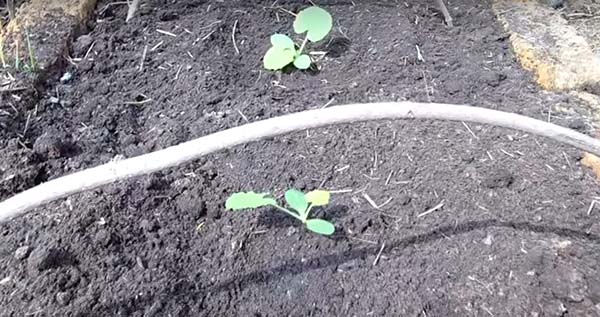
A flower bed for growing zucchini (although this method is suitable for zucchini and squash) can be made as follows:
- In the first year, collect all the cut grass (you can use tops, onion feathers) in one pile.

- The next year, when the grass is overwhelmed, sprinkle on top with a small layer of fertile soil (and before that, it is advisable to spill the rotted grass with Baikal M-1 at the rate of 100 grams of the product per 10 liters of water, or add ready-made compost).

- After planting seedlings or seeds, the garden should be overlaid with dry hay, because next year weeds will begin to sprout around, and we certainly don't need this.
Video: how to make a flower bed for growing zucchini
Video: the result of growing zucchini in such a flower bed
Direct landing
Step-by-step instructions for sowing zucchini seeds in open ground:
- Prepare the garden bed and make holes.
- Process the seeds (optional).
- Plant the seeds to a depth of 2-4 cm at a distance of 50-70 cm from each other, placing them on the rib (dry), or sprouted end down.
If you sow with dry seeds, then it is recommended to plant 2-3 seeds in one hole, and then leave the strongest and most developed plant during thinning.
- In case of recurrent frosts, it is better to cover the planting (for example, with film or ordinary cups).

- Sprinkle plantings with plenty of water. Until the moment of germination, the garden bed with zucchini should be watered more often.
Video: how to properly prepare a bed and plant zucchini with seeds in open ground immediately
Outdoor zucchini care
The basis for caring for zucchini is their regular watering and feeding as needed.
If desired, when the shoots reach 5-10 centimeters, you can mulch the zucchini, for example, sawdust... Mulch will prevent the soil from drying out quickly, you do not have to often water, loosen and weed from weeds.
Watering
Zucchini are very demanding on moisture. They need to be watered as the soil dries up, preferably at the root, and not by sprinkling (it is better to leave this method for dressing). As a rule, one watering every 5-10 days is enough, while the water consumption is about 1 bucket per 1 sq. meter of the garden. But still, first of all, you should focus on the weather conditions.

Important! Zucchini do not like cold weather and cool rains. their ovaries are prone to decay, therefore they need to be watered with slightly warm water, for example, after placing a watering can with water in the sun. In addition, almost all summer residents in the garden have a barrel or an old bathtub used as a container. From there, take water!
When it comes to harvesting, then watering should be stopped or reduced to a minimum. This is done to reduce the likelihood of decay.
If you grow zucchini in a greenhouse or greenhouse, then after watering, do not forget to ventilate the room well. These pumpkin seeds don't like high humidity!
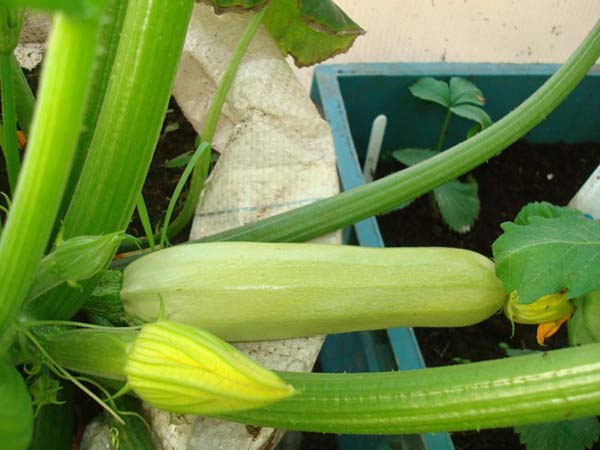
Also don't forget about loosening and weeding planting from weeds.
And the appearance of 4-5 true leaves in zucchini is a signal to hilling planting to stimulate the growth of lateral roots.
Top dressing
Lack of calcium often causes fruit to rot. It is possible to make up for the deficiency of this element by feeding zucchini with calcium nitrate. You can water this solution both at the root and on the leaf, but the second method is more effective and economical.

A very important trace element is boron... It is especially important to feed the zucchini with boron during the beginning of flowering. For example, you can use boric acid... Again, you can do both root and foliar feeding.
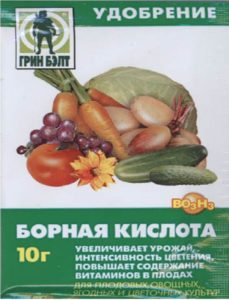
Also, to stimulate better tying, you can use specialized preparations, for example, Bud and Ovary.

Iodine deficiency often also causes zucchini to rot. To replenish iodine, it is useful to use the following recipe: take 30-35 drops of the product and dissolve in 10 liters of water, and then perform foliar or root feeding.

Potassium is responsible for the formation of fruits, so the zucchini should be fed with potassium fertilizer. For example, potassium sulfate (potassium sulfate) is perfect for this, wood ash.
Thus, if you replenish the above macro- and microelements on time, then you will have an excellent harvest of zucchini even in rainy and cool weather.
Advice! It is desirable to grow self-pollinated zucchini hybrids. In this case, you do not have to resort to artificial pollination, and in general they adapt better to adverse weather conditions.
Problems of growing zucchini
Why are they not tied
As a rule, zucchini are not tied for one simple reason - there is no one to pollinate them. Moreover, if the weather is cloudy, the bees do not like it, moreover, there are not enough of them at all.
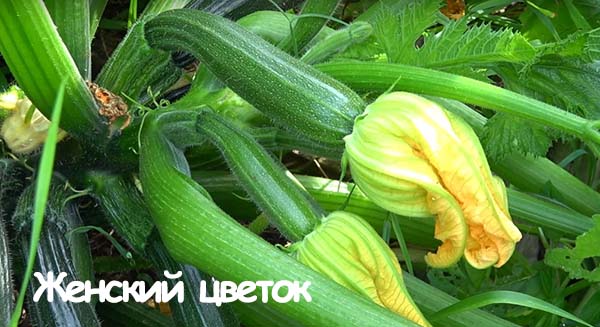
But you can carry out artificial pollination, then the zucchini is guaranteed to tie the fruit. First you need to figure out where the male flower is and where the female one.
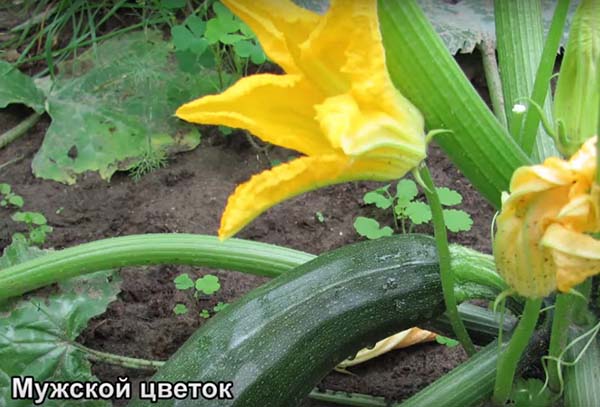
When the zucchini is just beginning to bloom, the first to appear are the male flowers, they have no ovary, unlike the female ones.
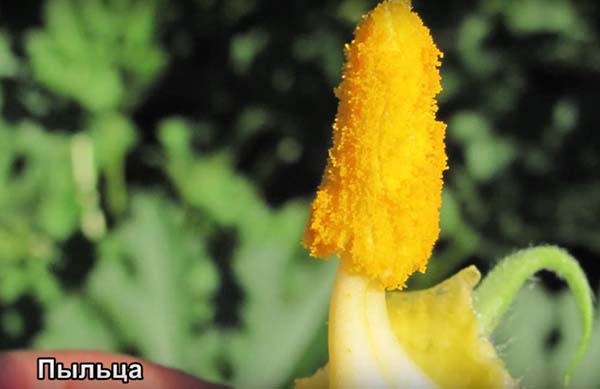
To artificially pollinate a vegetable marrow, you must first cut the male flower and peel it so that only pollen remains on the flower. Then open a woman's flower and touch its pistil, as if to anoint it with pollen.
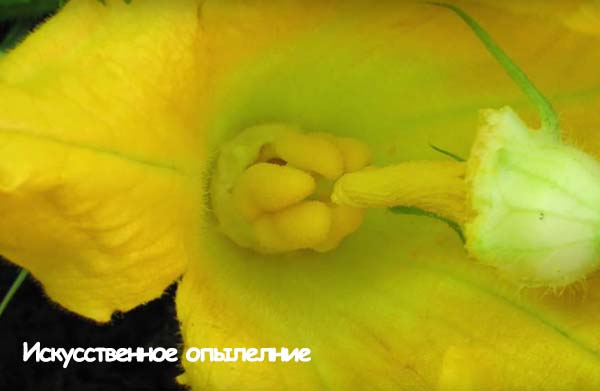
By the way! You can pollinate 2-3 female flowers with one male flower.
Video: why zucchini are not tied
If only male flowers appear on the zucchini and not a single female one, then this means that the plant either lacks watering (for example, in hot weather), or light if you planted it in excessive shade. But most often the problem is in the absence of trace elements, which means that additional feeding is needed.
It often happens that zucchini rot at the stage of small ovaries. What are the reasons, and what to do about it, read on.
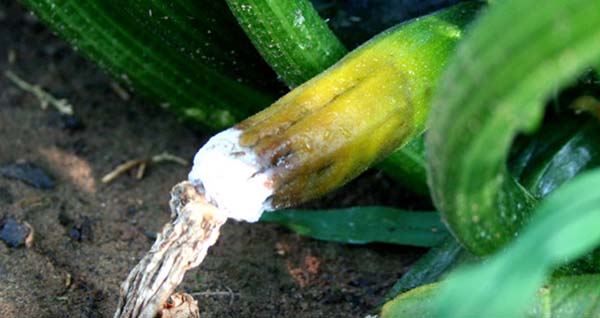
How to attract pollinating insects
If you have non-self-pollinated squash, then in order to get a high yield, you should take care of attracting to your site pollinating insects... There are several ways to attract them.
For example, during the flowering period, some summer residents recommend sprinkling zucchini beds boric acid solution (5 g) and sugar (1/2 cup) in a bucket of water.
Another option: put containers with honey solution near the zucchini (1 tablespoon for 0.5 liters of water).
A more aesthetic way to attract pollinating insects to squash beds is landing between colors such as marigold... This will not only attract pollinators, but also decorate your garden. Moreover, these flowers will protect the roots of the squash from nematodes.
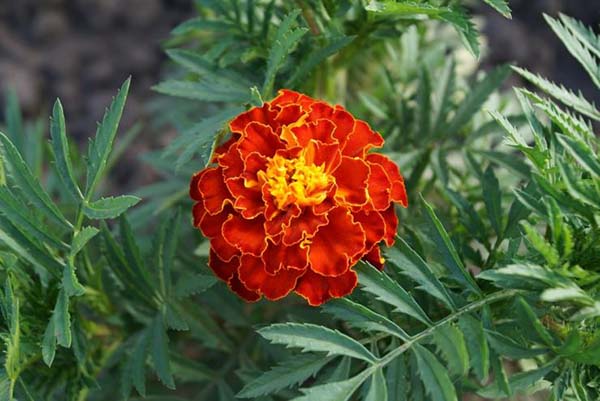
To attract pollinating insects to the garden, you can also feed the squash plantings with infusion of yeast with sugar. You will need 30 grams of yeast and 100 grams of sugar, which you need to fill with 3 liters of water, and then put in a sunny place until the first signs of fermentation appear. Next, pour the resulting infusion into a bucket and pour 10 liters of water, and then pour the zucchini themselves.
Why do the ovaries rot
One of the most popular causes of zucchini ovary decay is cold and rainy weather. In such conditions, the ovaries are not pollinated, there is no ventilation, and the bees do not fly in such weather. Even self-pollinated hybrids cannot develop normally.
The second most popular cause of decay is the thickening of the planting of zucchini or the bush itself. Therefore, it is necessary not only to plant at the correct distance, but also to trim the leaves to give light and air access to the ovaries.
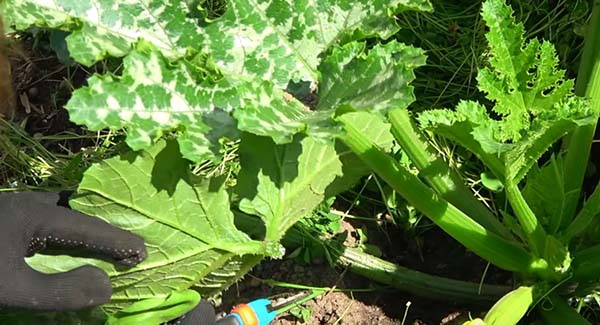
Another reason, which is often forgotten, is the situation when the flower does not fall off the ovary. It begins to decay, and then the ovary itself decays. Therefore, it is necessary to regularly examine the zucchini ovaries and manually remove the flowers when the fruit is already growing.
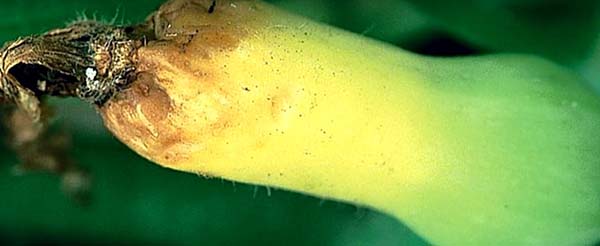
An equally common reason is the lack of micro and macro elements, in other words, zucchini require additional feeding.

Harvesting zucchini for storage
The moment of harvesting zucchini, as a rule, occurs about 2 months after the date of sowing in open ground or 1-2 weeks earlier when growing through seedlings.
Important! More details about the timing of harvesting and storage methods for zucchini at home read in this article.
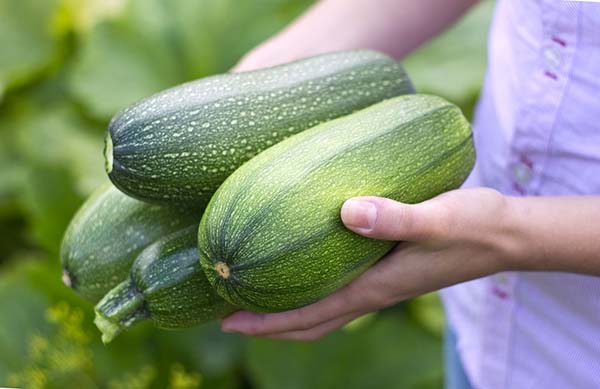
Even a novice summer resident will be able to pamper himself with such a delicate and dietary vegetable like zucchini, if he takes utmost attention to our advice and recommendations on planting it in spring with seeds in open ground. So go ahead to the store for seed!

